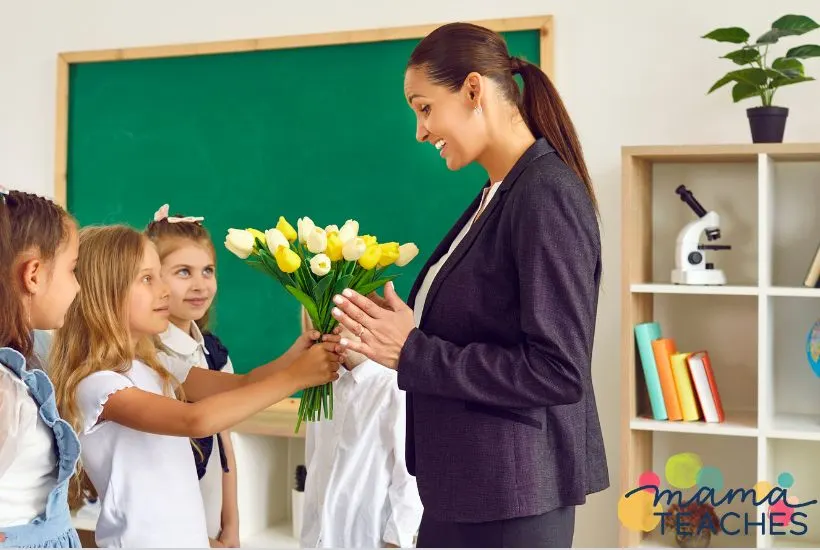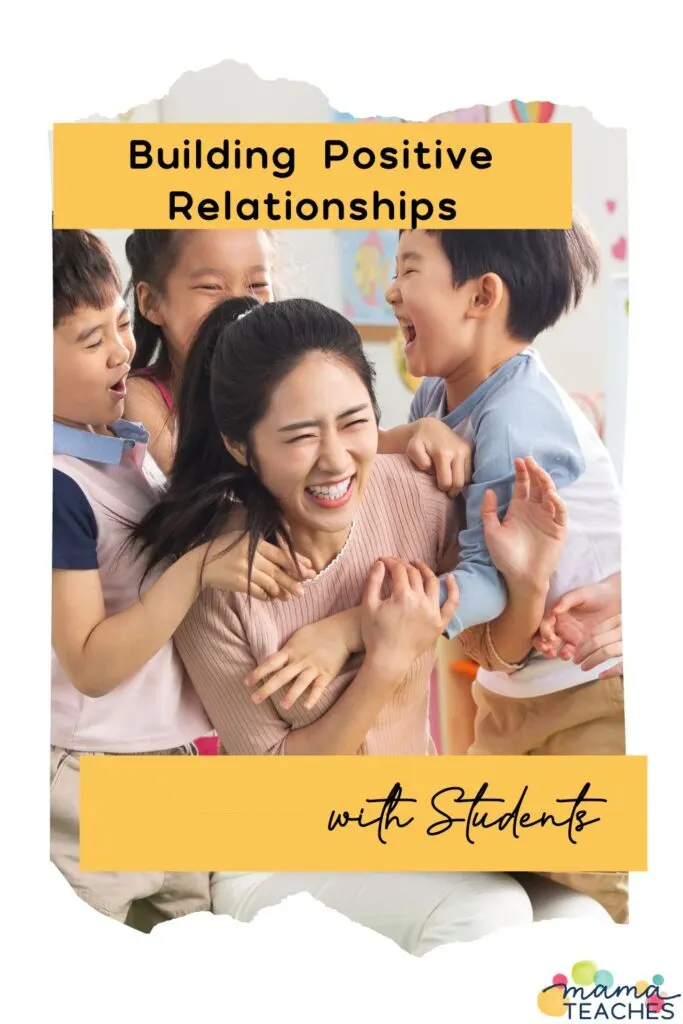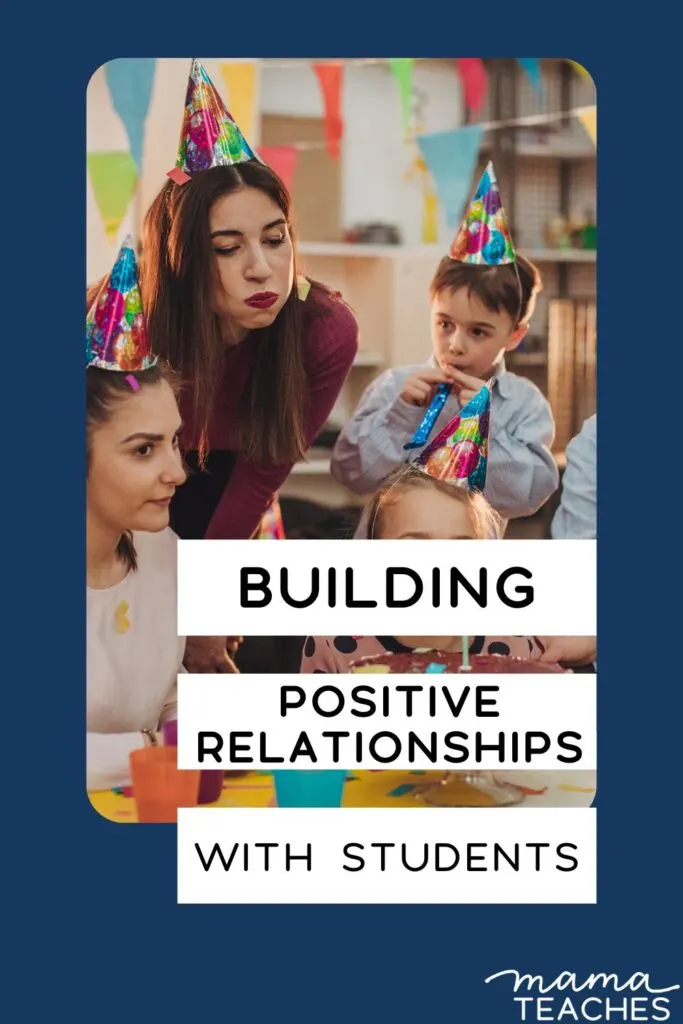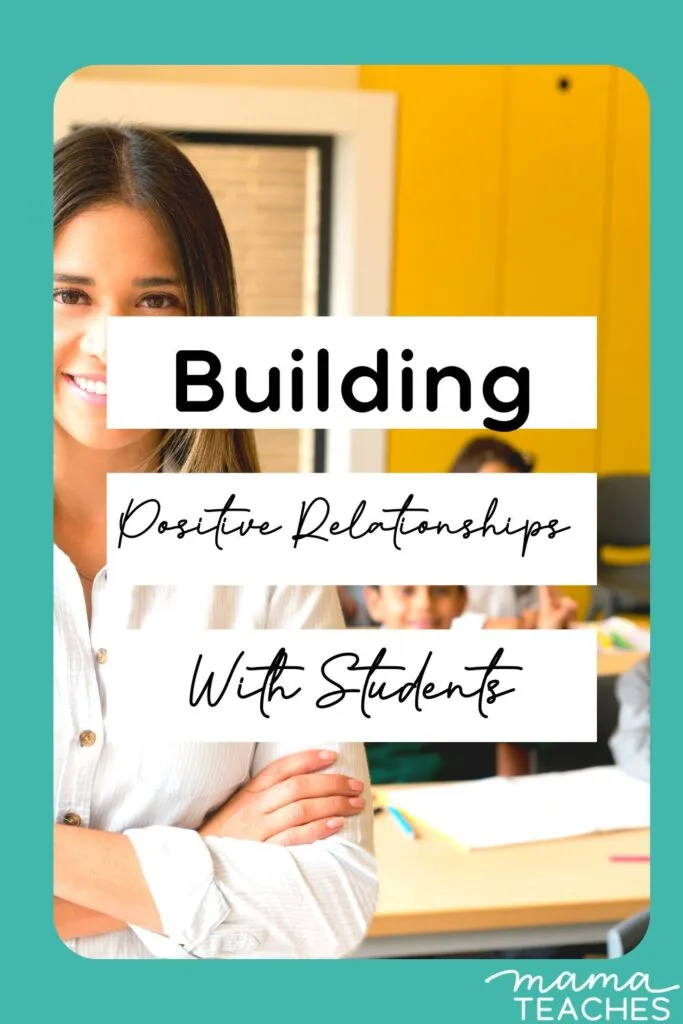Having a positive relationship with your students is like sunlight; it warms everything.
How do you go about building positive relationships with students?
Read on to find out!

This article contains affiliate links to things that you might like.
Why Positive Relationships Are Important in School
Are there benefits to positive teacher-student relationships?
Absolutely.
When your students see you as their supporter, they will look forward to class, try harder in their schoolwork, and give your life advice weight.
Your class time will be more pleasant, and your job will be easier (because you won’t battle your students).
While those reasons are compelling, they aren’t primary.
You likely got into teaching because you like kids.
They are human beings who deserve love, attention, and respect.
When you work to form a positive connection with students, you do so because you see their value as individuals.

Ways to Develop Positive Relationships with Students
You may want a positive relationship with your students, but how do you make it happen?
Communicate that you value your students through your attention, actions, and speech.
Try some of these strategies to make building positive relationships with students a snap!
Lunch Groups
Do you have to eat lunch in the cafeteria with your class?
Why not turn it into a chance to get to know your students better?
Have a lunch rotation where you sit with different students each lunch (or pick a specific day of the week when you do this).
You can bring fun table talk questions like Would You Rather Questions.
Book Club
Book clubs are an excellent way to encourage reading.
Another plus?
Book discussions can lead to honest sharing, where people get to know each other better.
Pick books that aren’t too long or difficult, and choose appealing subjects.
Positive Reinforcement
Negative reinforcement points out what you are doing wrong.
Positive reinforcement points to what you are doing right.
Both are effective ways of changing behavior, but positive reinforcement forges a bond between you and your student.
It also helps your students develop a growth mindset.
Students have enough critics (and likely they are their own worst critics); be a positive voice in their lives.
Point to the good.
You will be surprised at how they will try for you.

Being Genuinely Interested in Their Lives
Students are multi-dimensional people.
They have lives and interests and skills that extend outside the classroom.
When you ask them about their lives, you show that you care about them as people (not just as students).
Do they play sports?
Ask them about their games.
Do they have a new sibling?
Ask about what it’s like being an older brother or sister.
Show your students that you are genuinely interested in their lives; it’s an essential step in building positive relationships with students.
Celebrating Birthdays
Nothing is worse than people forgetting your birthday.
Be someone who remembers and celebrates each student.
You don’t have to do something huge, but you can make your students feel seen and loved.
Check out this article on how to celebrate birthdays in the classroom.
Making Eye Contact
I know, I know, this seems pretty basic.
But in a world where more and more people are looking down at their phones instead of at one another, eye contact is a powerful but often forgotten tool for building positive relationships with students.
Remember, you want your students to know that you see them literally and figuratively.
Eye contact is a significant first step.

Constructive Interactions
You can’t be positive all the time.
Failed tests, missing homework, the violation of class rules, and unacceptable behavior…all these must be addressed.
How do you build positive relationships with students when you have tough conversations?
You keep your interactions constructive.
Actions trigger consequences, that is for sure.
But you don’t need to pile on guilt and blame.
Focus on the steps your student can take to improve the situation or do better next time.
Don’t overwhelm them with a long list.
Give them one or two items to work on.
Show them that you are their ally; you want to help them get back on track.
How to Build Positive Relationships with Your Students
You are a caring teacher.
(I know that because you wouldn’t be reading this article if you weren’t.)
Maybe you have gotten off on the wrong foot with your students, and you are looking to improve your relationship.
It is never too late!
Try some of these ways to develop positive relationships, and watch the atmosphere in your classroom shift.
